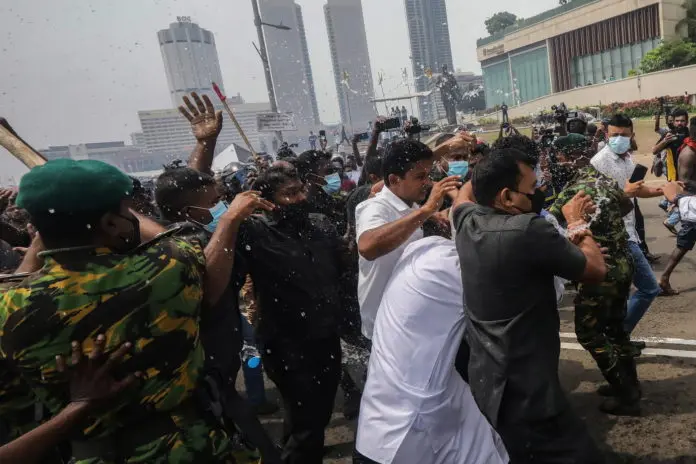- P.O. Box: 11482 Yaoundé, Cameroon; Headquarters: Efoulan, Yaoundé 3
- contact@caessinternational.org

In a context of social revolt against his rule, the Sri Lankan head of state has chosen to use force against protesters. By ordering security forces on May 11, 2022, to open fire with live ammunition on demonstrators, President Rajapaksa decisively plunged his regime into violence, justifying his decision by the alleged risk of “anarchy.” The streets of the country’s capital, Colombo, are regularly patrolled by defense and security forces equipped with armored vehicles and special intervention units. With a nationwide curfew in place, President Gotabaya Rajapaksa has been maneuvering through violence to maintain his hold on power for many months.
Protests, which started peacefully, have become frequent and escalated into violent clashes involving the president’s supporters. In this context, the country’s ongoing economic and financial crisis is blamed on the opposition. The combination of economic hardship and political weariness triggered the insurrectionary movement, causing widespread social disorder, including destruction of property, dozens of deaths, and hundreds of injuries. Despite the resignation of his brother Mahinda from the post of prime minister and the dissolution of the government, the president appeared unmoved by the protesters’ demands. He announced his willingness to relinquish certain powers such as:
Appointing a new prime minister;
Granting more power to Parliament;
Ending the presidential system and the executive’s absolute authority.
Moreover, the country’s economy is gradually collapsing to the benefit of the Rajapaksa family, whom protesters identify as the main source of Sri Lanka’s misery. The economic collapse is characterized by:
Unsustainable debt;
Depletion of foreign exchange reserves;
Shortages of oil, gas, food, and medicine.
Despite brutal methods, protesters demanded the removal of President Gotabaya Rajapaksa’s clan from state affairs, accusing them of widespread corruption and political crimes. This has undermined the presidential clan’s legitimacy as the protector of the Sinhalese Buddhist majority.

Figure: From Hard Process to Soft Process in the Failed Attempt by the Country’s Executive to Restore Order and Security. Source: CAESS 2022
In this context of political instability and the militarization of security order, calls for a peaceful stabilization of the country have been made by Western chancelleries, the Holy See, and civil society organizations, with a strict guarantee of fundamental rights and civil liberties.